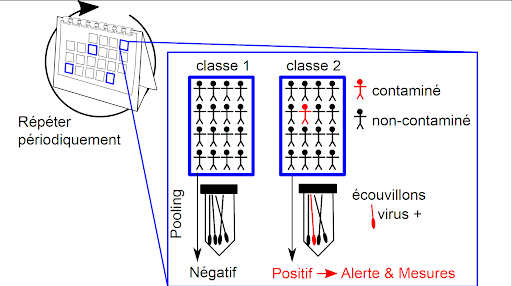One of the challenges of the current COVID-19 pandemic is the need to test populations as widely as possible to better detect spread and evolution. However, technical problems were highlighted, such as the tension on the availability of reagents. To limit this problem, pooling methods (mixing multiple samples before testing) are regularly considered in RT-qPCR (see, for example, Gollier et Gossner (2020)).
In this talk, we will begin by explaining the principle of an RT-qPCR test and recall the definition of the false positives and negatives. We will then look at the pooling principle and how this procedure influences the results on the rate of false negatives. In particular, we will highlight the importance of knowing the distribution of viral load concentration. Therefore, we will continue on the difficulty of estimating this concentration and conclude with a few procedures that could be applied to help in this time of crisis.
